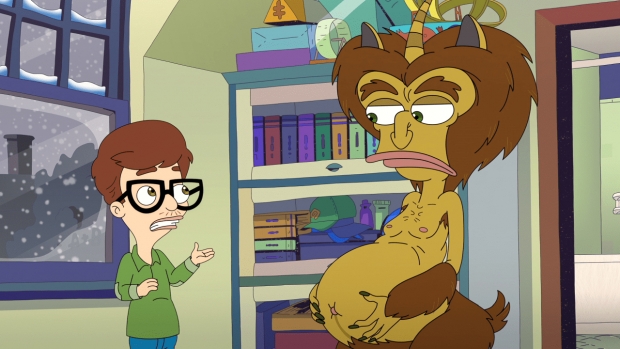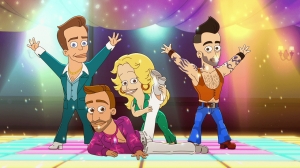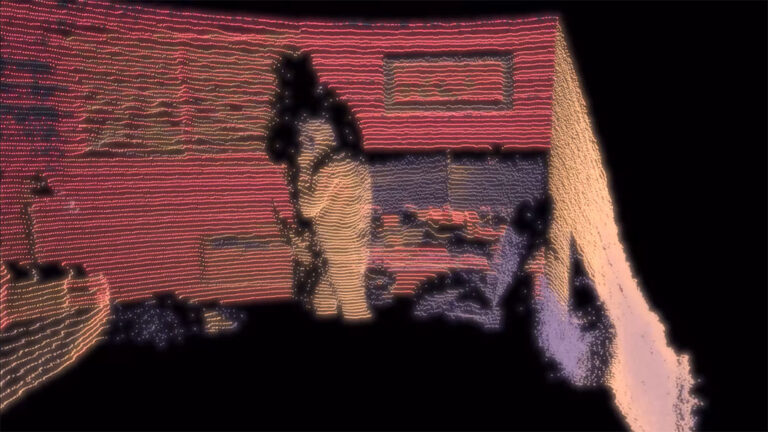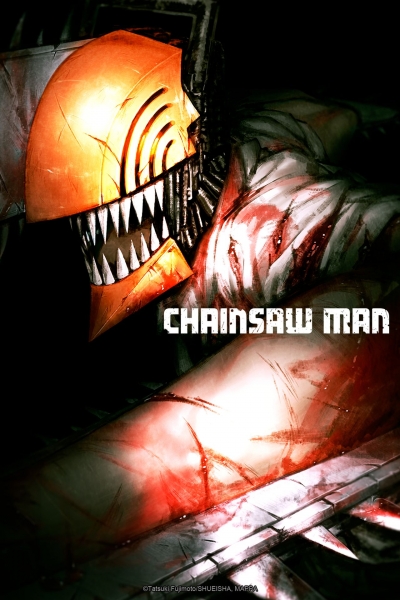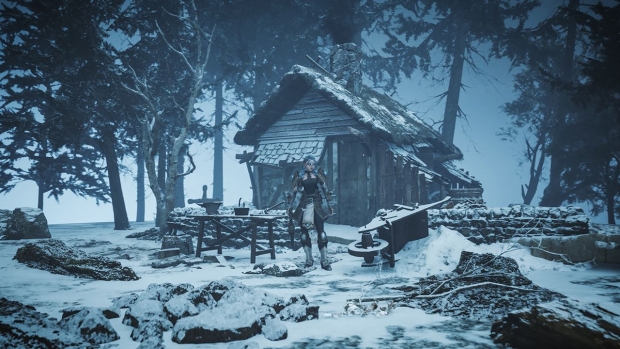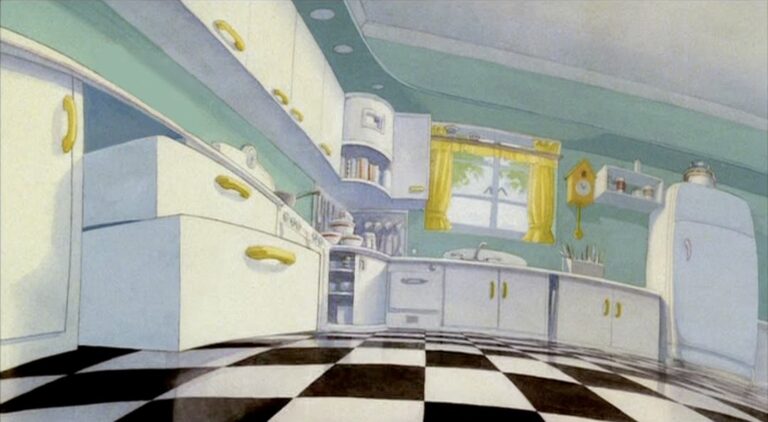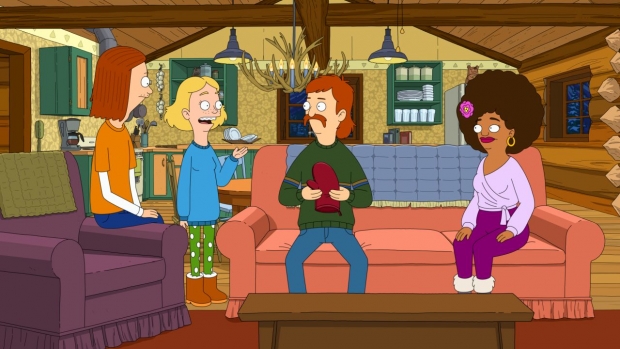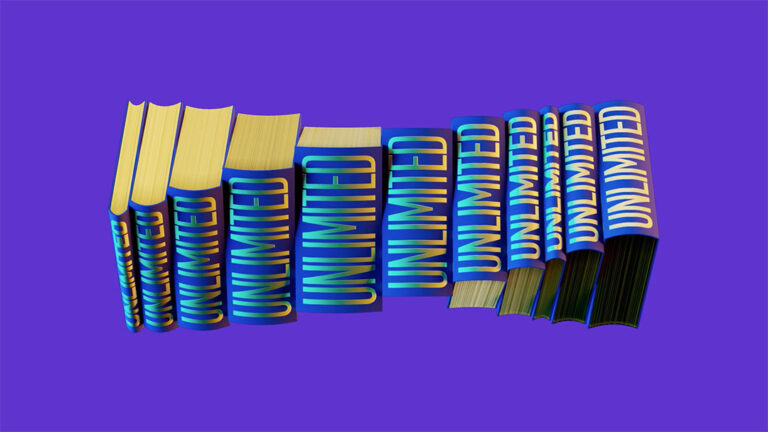To quote the uncharacteristically coy text component of the Season 6 trailer for Netflix’s acclaimed, Emmy and Annie Award-winning series Big Mouth: “Families are like a#%holes. Everybody’s got one.” And while not every family can boast a pregnant (male) hormone monster, a character whose DNA test reveals that she has three dads, or a grandpa who was a famous nipple-twisting champion – all of which, and much more, comes to light in the new season – the trials and tribulations endured by the show’s long-suffering adolescents as they struggle toward adulthood will resonate with anyone who lived through puberty.
AWN: Is the design of new characters influenced by the actors who are going to play them, or is that a completely separate process?
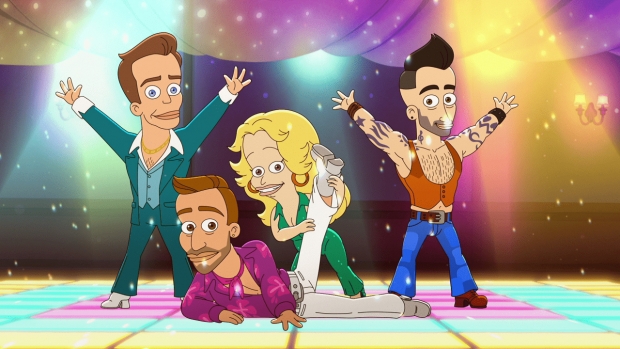
Thematically, this season is all about family. We talk to teenagers every year, asking them what’s going on with their lives, and what have we not done yet that they’re really interested in. And when we talked to them last year, they pointed out how much more time they had been spending with their families because of the pandemic. I think a lot of people, especially in the early days of the pandemic, spent much more time with their immediate families than they had in the past. That’s why we chose family as the theme this season.
And the other thing was that we wanted to be able to use our style to leap out into these flights of fancy – what we call animation moments – that are often about really getting inside our characters’ minds and breaking out of reality a little bit. Obviously, the hormone monsters do that throughout every show. But, in this season, our artists got to really flex their muscles in the Lola musical episode, in which the musical numbers are blown out into full-scale spectacles. We also have a really fun season finale, which is a body switch episode, where we get to delve into some sci-fi elements. And the “Vagina Shame” episode that I mentioned, because it’s a series of short stories, is also stylistically a little different in that it feels like a collection of short films more than a TV episode.
AG: Steve-O has a cameo that’s really fun that I think people are going to love. And in Episode 6, Jeff Goldblum plays a piece of technology that’s very fun. It’s the first episode that we’ve done that’s all about money and class, which is something that starts to become very apparent to kids the age of our characters. I think my favorite episode of the season – and maybe of the whole series – is this Lola musical, which we called “Dada Dia.” It’s kind of a version of Mama Mia, where these three guys show up and tell Lola that one of them is her real dad. Mark Rivers, who writes all our music, wrote some amazing songs for it. And we have Adam Levine, Ed Helms, and Matt Rogers playing the dads.

Then, the other part of it is we also take our research very seriously. For instance, this season we have an arc with this new character, Elijah, who’s played by Brian Tyree Henry, and he’s terrific. The arc is about Elijah and Missy’s relationship, but also about Elijah discovering how he identifies as asexual. So, since we didn’t have anyone on our writing staff who identified as asexual, we brought in experts from [the meetup and outreach group for asexuals in southern California] Ace Los Angeles, and we talked to teenagers who themselves identify as ace. Throughout the process, we shared our script and our rough cuts and animatics with those people to get their feedback. So when we wade into those territories, we really try to be as thoughtful and honest about it as we can.
AWN: So, what can you share with us that’s coming up in the new season? You’ve got a great guest voice lineup – folks like Chris O’Dowd, Peter Capaldi, and Steve-O.
AWN: While at this point it’s hard to imagine Big Mouth as anything other than an animated series, it might have been done differently. Can you talk a little about the way you use animation to tackle these loaded issues, and how it compares to a live-action approach?
AWN: Did you ever fantasize about working together someday?
AWN: Can you talk a little about the style of the show and whether anything is different this season?
AG: One really nice thing about doing two shows at once is that, because we do only 10 episodes a season, in the past our artists would have these long hiatuses that they would have to fill with other work so that they could come back each year. But now they can go from show to show and have work year round. And, on a creative level, having the same people work on our shows year round has been terrific.
AWN: When we spoke last time, you also emphasized the importance of your creative team. When you put yourself in the midst of talented people, good things can happen.
AG: From the very beginning, Anthony Lioi and I agreed on two things. One is that we have these incredible comedic actors and we have these shows that are funny, but they’re also emotional. So it was important to us to have a style that allowed us to really sell the emotions on the show. And to me the most important thing in terms of our character design has always been our characters’ eyes. Because, in most adult animation shows, eyes are a white circle with a black dot. And, early on, we had this idea of creating these irises with facets and different colors, which I think – even if people don’t notice it specifically when they’re watching – really deepens the emotional connection that the characters can create.
AG: Netflix gives us a lot of freedom in terms of the subject matter of the show. I mean, occasionally they’ll push back, but usually we’re our own arbiters. And I think it tends to be based on two things. One is that having a diverse group of people in the writers’ room – with regard to race, sexual orientation, gender identification, socioeconomic background – is really helpful because you get all these different perspectives that you wouldn’t have considered if it were 10 people just like you. And we make sure that everyone feels empowered to speak up when they have an opinion or when they think something should be handled differently.
AG: Yeah, but it’s interesting that we waited till pretty deep into our careers and our adult lives to work together. I think both of us were a little concerned about whether working together would compromise our friendship. Fortunately it hasn’t. I always wanted to work with Nick, but I wanted it to be the right thing, and I think that’s really what happened.
AG: I would also add our partners and co-creators Mark Levin and Jen Flackett. Who knows if working with Nick would’ve gone so well if we hadn’t had other great collaborators to balance out the whole dynamic?
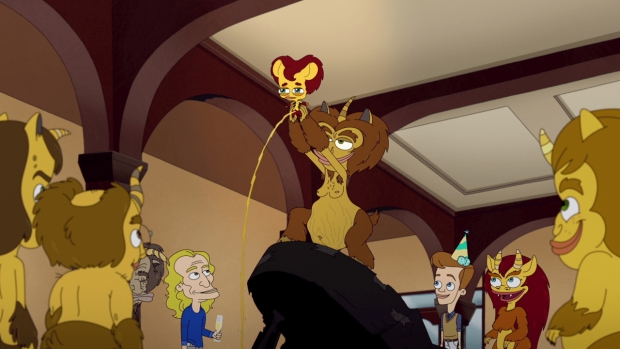
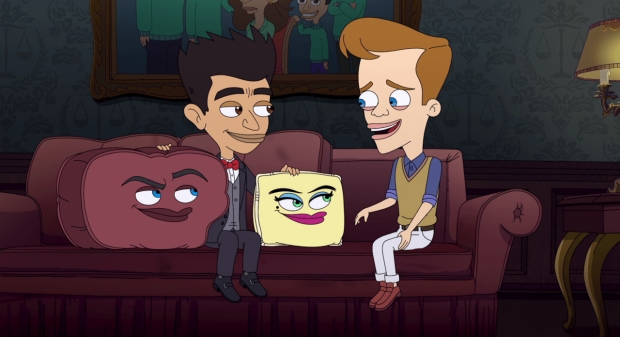
AG: And with Big Mouth especially, we’ve just surrounded ourselves with such talented people – from the cast, to our artists led by Anthony Lioi, our supervising director, to our production people led by Nate Funaro, who’s just a terrific producer. Over the years, we’ve been able to assemble a great group of really high-quality people on the show.
AWN: Before we get to the new season, people may or may not know that you and your co-creator Nick Kroll grew up together. Was he as funny and talented as a kid?
Dan Sarto is Publisher and Editor-in-Chief of Animation World Network.
AG: As a fan of the animation medium, my favorite series are the ones that could only exist as animated shows. And I think Big Mouth definitely falls into that category. My favorite tools are the hormone monsters and the other creatures. There’s always something very exciting about a kid having a discussion with their hormone monster, or with a group of their creatures, because they’re honest in a way that they couldn’t be otherwise. It’s like a version of The Office or Modern Family, where they’re speaking directly to the camera and bearing their souls a little more. But, in our show, they’re speaking to these imaginary creatures, who are actually part of them. So it’s especially incisive. When we use animation to get inside our characters’ minds and allow them to be more personal and honest than they could ever be with another human being, that’s when we’re using animation most effectively.
There’s another episode called “Vagina Shame,” which is a kind of anthology of stories revolving around shame and vaginas. For the first time ever, we scored it with a live orchestra. We had this huge European orchestra, only some of whom spoke English, and I think it was recorded in Hungary. I truly wonder how much they knew about what they were scoring. But it’s a really beautiful episode.
Created by Andrew Goldberg, Nick Kroll, Mark Levin, and Jennifer Flackett, Big Mouth is based on the childhood experiences of Kroll and Goldberg, who grew up in Westchester County, NY. In addition to Kroll, who voices multiple characters of various genders and ages, the star-studded cast of regulars includes John Mulaney, Jessi Klein, Jason Mantzoukas, Ayo Edebiri, Fred Armisen, Jordan Peele, and Maya Rudolph, who received back-to-back Emmy Awards for her portrayal of Connie the Hormone Monster. Since its debut in September 2017, Big Mouth has been both a popular and critical success, the latter reflected in its current Rotten Tomatoes score of 99%.
Andrew Goldberg: Yes. He was always this big personality and was always very funny. And, since we were kids, we’ve had the same dynamic. We used to host a talent show as Wayne and Garth from Wayne’s World, where Nick was Wayne and I was Garth, which reflects our personalities. He’s the front man and I’m a little more behind the scenes. But he was always really funny. I don’t think anybody that knew us growing up is super surprised about what either of us is doing now.
AWN: You could make an argument that it’s because of you guys that the project became what it is.
AWN: This is your sixth season, with a seventh season greenlit, plus you’ve got the spin-off Human Resources, which scored a second season pickup. Would it be safe to say you and your team are keeping busy?
With the debut of the hormone-infused, multiple-paternity, nipple-twisting new season of Big Mouth just days away, we spoke with co-creator Goldberg about new stories and characters, the show’s animation style, and the careful balancing act required, especially in a time of heightened cultural polarization, in dealing with controversial material.
The show’s success paved the way for a spin-off series, the “edgier and adultier” Human Resources, created by Goldberg and Kelly Galuska, picked up for a second season by Netflix this past April. Also of note, Kroll, Goldberg, Levin, and Flackett’s production company, Brutus Pink, snagged a 3-year deal extension with Netflix this past August. The fun, sexually charged puberty hijinks business appears to be booming.
AWN: A lot of the subject matter you deal with is especially controversial right now. Is there ever any pushback from Netflix or from your team? Do you ever say, “Yes, this is really funny, but maybe we should save that for another day?”
AG: Unless an actor specifically doesn’t want their character to look like them, we tend to refer our artists to the actors themselves, because it’s fun to have the characters look like the people voicing them. Even for extras, we try to use a real person for visual reference. My favorite extras on the show are drawn to look like members of our crew. If you look closely, you’ll see me in there sometimes. But, with a character, at least in our shows, when the jumping off point is a real person, there’s something more human about the character – less generic and more specific – that makes them more interesting on a design level.

